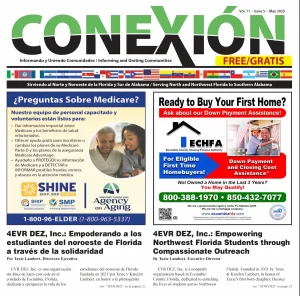The Chitlin’ Circuit and Sister Rosetta Tharpe, and SHOUT, SISTER, SHOUT
By Deborah Desilets
Some 8,000 miles later—and many back roads of the Chitlin’ Circuit— I am soaked in the noisy grit from the road; its’ many dips and dives, curves and swerves that are the spine of our nation and produced the back beat so famous in the music of rock and roll. To begin here is the definition of chitlins: noun; informal “a dialect form of chitterlings (a food stereotypically associated with black people and poor southerners).” This is soul food, slow cooked recipes from African roots. Black folks in Jim Crow America knew any place serving Chitlins would be a safe place to eat, stay, and play their music. So, a network of taverns, rooming houses, clubs and Juke (aka jook) joints formed the Chitlin’ Circuit, where black musicians made their music. Now many are legends in Rock and Roll music history in America.
Driving the Chitlin’Circuit today means moving as the crow flies on back roads. I went west from Tallahassee, across the delta—the homeland of the blues—passing many a small town “strolls”. In Garden City, LA the Theriot sisters gifted me a box of some really cool 78’s from the late 40’s and 50’s: Louis Jordan, The Inkspots and Sister Rosetta Tharpe. With vinyl secure, I rode through Texas and then up to Houston on seemingly endless rows of railroad tracks that led to the address of the infamous Bronze Peacock nightclub. The building is gone now, but the dirt and dust and the location are the same as when 8,000 square feet of bar, dance floor, and bandstand delivered to the world in 1942 Louis Jordan and the Tympany Five’s overwhelming success: “Is You or Is You Not My Baby?” the first No 1 song on the country and western chart.
By 1947 the Chit’lin Circuit was in full swing with Sister Rosetta Tharpe, whose brilliant finger-picking style—unusual at the time— dazzled and impressed many from Elvis to Cash; Jerry Lee Lewis to Etta James. From Ms. Wald’s new book, “Shout, Sister, Shout” we get the back story of Rosetta Tharpe; who began “as a vocalist and guitarist of the Sanctified Church and one of the most remarkable—yet largely forgotten—musicians of the twentieth century. Beginning in the 1930s, she commenced a colorful career as gospel’s original crossover artist, its first nationally known star, and the most thrilling and celebrated guitarist of its Golden Age—so called because it saw the emergence of the genre’s defining artists, including Mahalia Jackson, whose fame would eclipse Rosetta’s by the 1950s.” But from 1942-47 she was “Harlem’s Holy Roller Rhythmaid” who inspired—Little Richard who “felt more like a girl”, sang falsetto and gave the world “Tutti-Frutti”. By 1949, Little Richard had become the “quasar of rock-n-roll” wearing a silvery cape and high pompadour on the night stages in clubs following the many African American musicians of that time who travelled from Macon, Memphis, New Orleans, to Houston and spots unknown on the Chitlin Circuit.
Now—following those old back roads windows open to the wind whipping in—Louisiana potholes will talk to you; send you on a cadence of wheel, dust and dirt that rumbles: “Don’t drive straight; do dodge the flowers in the potholes”. Here the road speaks to you: I have drunk from the well called America and I am still drunk. Connected now to every pothole, bumping and thumping, rocking and rolling; the motion and the emotion of putting metal to the petal in lean muscle machines that carried the salty, sultry, soul in a mix of rumble and tumble that made rock n’ roll I realize that I am on the pursuit of reclaiming the lil’ rock’n’roller in me—having tuned out TV, radio and modern static in the air.
Leaving Houston for parts unknown I wound up in Cleveland. Walking into the “Rock and Roll” Hall of Fame was the end of a long journey for me. On the third floor Sister Rosetta Tharpe was honored having been inducted into the 2018 Hall of Fame as an Early Influence. Now her sounds rolled over the water as I left Cleveland for Buffalo NY. One campsite out from Buffalo (where I will visit the last Colored Musicians Club) I wash the Rock and Roll dust from my skin in an early morning shower. Somewhere in the sloshing of water, I hear a song rising softly from the stalls: “Oh say does that star-spangled banner yet wave” and I sing too: “Over the land of the free and the home of the brave”: A privilege to express the “me” in tune with the “we”.
http://www.pbs.org/wnet/americanmasters/timeline-the-years-of-sister-rosetta-tharpe/2487/



